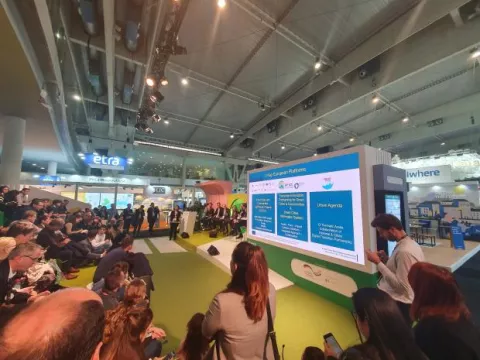
As we say goodbye to another year of the Barcelona based Smart Cities Expo World Congress, we reflect on what we saw, said and heard at what is clearly the world’s leading gathering of smart cities policy makers, practitioners and solution providers.
Two representatives from our leadership team spent three days walking the expo hall covered by more than 800 companies and nations showcasing their work to help enable technology and data to do good in the world. The expo was supplemented with a diverse speaker program – more than 400 speakers to be exact.
Here are our top five takeaways:
- Not much on the tech-side has changed, but new delivery models and maturity of the demand-side certainly has. From creative public-private partnership models, alliance contracting, performance-based agreements and more sophisticated financial modelling underpinning greater private sector investment, this was exciting to see emerge this year.
- And these emerging models are being helped by better research and use cases, as demonstrated in the much anticipated release of a new report, “Building a Hyperconnected City,” by ESI ThoughtLab and supported by an impressive line-up of companies and organisations who helped shape the research, including the Smart Cities Council. The study groups 100 leading smart cities into three categories: “implementers” (25 cities), “advancers” (50), and “leaders” (25). The report can be found here.
- There is no doubting that the UN Sustainable Development Goals (SDG) are resonating in some nations, as they use them as a framework for smart cities planning, action and investment. Europe, South East Asia and South America seem to have strong commitments to, and are actively using the SDG’s in shaping policy, technology frameworks, and the reporting of outcomes from their smart cities efforts.
- Collaboration and aggregating demand featured highly in the efforts of government at all levels. From the EU’s 80 Billion Euro Horizon 2020 program, to multi-city smart city partnerships in the Nordics, Indonesia and India, among others. This continuing trend of cities working together is a signal that the appetite for investment in technology and data solutions is growing and becoming a priority.
- On the technical front, there was a clear pivot in language from past IoT prominence, to a data and decision making narrative. If the core function of the smart city is to collect, communicate and crunch data, the ‘crunch’ part on show this year big time. From integrated command and control centres and dashboards, to data analytics tools such as artificial intelligence and machine learning, the role of data in transforming a cities capacity to thrive was prominent.



